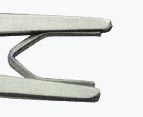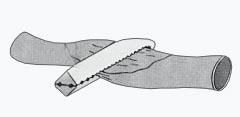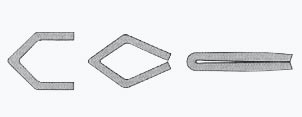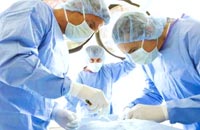Inovações do Dr. Malucelli
- Utilização de ótica de 30 graus (Que proporciona maior mobilidade e visualização);
- Uso equipamentos de pequeno diâmetro (diminui a cicatriz e a dor);
- Realização da cirurgia sem “murchar” o pulmão;
- Não se faz uso de cauterização extensiva (o que promove menos dor);
- Fechamento da pele com pontos intradérmicos (não necessita pontos).
O Dr. Malucelli está sempre atento às inovações, trazendo ao Brasil novidades nos tratamentos do rubor facial. Além disso, o médico participa da ISSS (International Society on Sympatetic Surgery) – Sociedade Internacional de Simpatectomia, congresso que reúne os maiores nomes da área para discutir novas tecnologias para o tratamento do rubor facial.
Confira algumas das inovações trazidas ao país pelo Dr. Malucelli:
Cirurgia do rubor com clipagem do nervo simpático (simpatectomia torácica)
Cirurgia feita por vídeo e, por isso, minimamente invasiva. Pode eliminar o rubor da face e as sensações adrenérgicas com sucesso, baixo risco e se ocorrer o efeito colateral “suor compensatório” os clips podem ser retirados do nervo.
Dr. Malucelli é pioneiro no Brasil na utilização da clipagem do nervo simpático na cirurgia do rubor, técnica que permite a reversão da cirurgia em casos específicos.
Artigo demonstra a melhora a reversibilidade após a retirada de clips
Artigo médico apresentado no último encontro da ISSS (International Society on Sympathetic Surgery) no Japão em maio de 2017 demonstra a melhora a reversibilidade após a retirada de clips.
O-026 – Outcome of clip removal after endoscopic sympathetic block
Neumayer C*; Karimian-Teherani D**; Panhofer P*; Zacherl J*; Schick KS***, Schick CH****; Bischof G*****
Institution: *Department of General Surgery, University Clinic of Surgery, Medical University of Vienna, Austria; **Department of Dermatology, Medical University of Vienna, Austria; ***Department of Surgery, University of Munich – Grosshadern, Munich, Germany; ****German Hyperhidrosiscenter, Munich, and University of Erlangen-Nuremberg, Germany; *****Department of Surgery, St. Josef-Hospital, Vienna, Austria
Introduction: In 1998 endoscopic sympathetic block by clipping (ESB) has been introduced in sympathetic surgery claiming potential reversibility after clip removal (CR). To date, only anecdotal reports are available on clinical outcomes after CR.
Objectives: The aim of the study was to investigate whether CR actually resulted in reversal of compensatory sweating (CS), and whether the initially obtained therapeutic effect on hyperhidrosis of the upper limbs (HH) and the face (FH) and facial blushing (FB) diminished with time.
Materials and methods: Between 6/2001 and 11/2006 a total of 23 patients (6 females, 17 males) with a mean age of 34 ± 7 years underwent CR after ESB. Three patients underwent unilateral clip removal due to mild ptosis (one patient with ESB2, 2 patients with ESB3). Twenty patients had their clips removed due to unbearable CS. Levels of HH, FH, FB and CS were graded by a visual analogue scale ranging from 0 (no sweating/blushing) to 10 (most severe sweating/blushing). Mean follow-up after CR was 19 ± 16 months obtainable from 20 patients (87%).
Results: The 3 patients who suffered from ptosis started to improve 2 weeks after CR, complete relief was observed 3 months thereafter. In each of the groups with ESB2 and ESB3, 9.5% of patients underwent CR. However, only one patient after ESB4 had to be reoperated (0.7%, p < 0.05 compared to ESB2 and ESB3). Four patients (20%) reported no change in CS after CR, in 3 patients (15%) CS dissolved completely. Overall, CS improved from 8.4 ± 1.3 to 5.1 ± 2.4 (p < 0.05). HH, FH and FB recurred to about 40% of the initial levels, 4 patients (20%) reached preoperative levels.
Conclusions: Clip removal because of unwanted side effects is more common in patients after ESB2 and ESB3 than after ESB4. CR results in partial reversibility of CS and causes partial recurrence of the initial complaints. Although some patients do not benefit from CR, our study provides valid data that ESB is a reversible technique. It can therefore be regarded as the only fairly simple method in sympathetic surgery offering relief for patients with unbearable CS.




